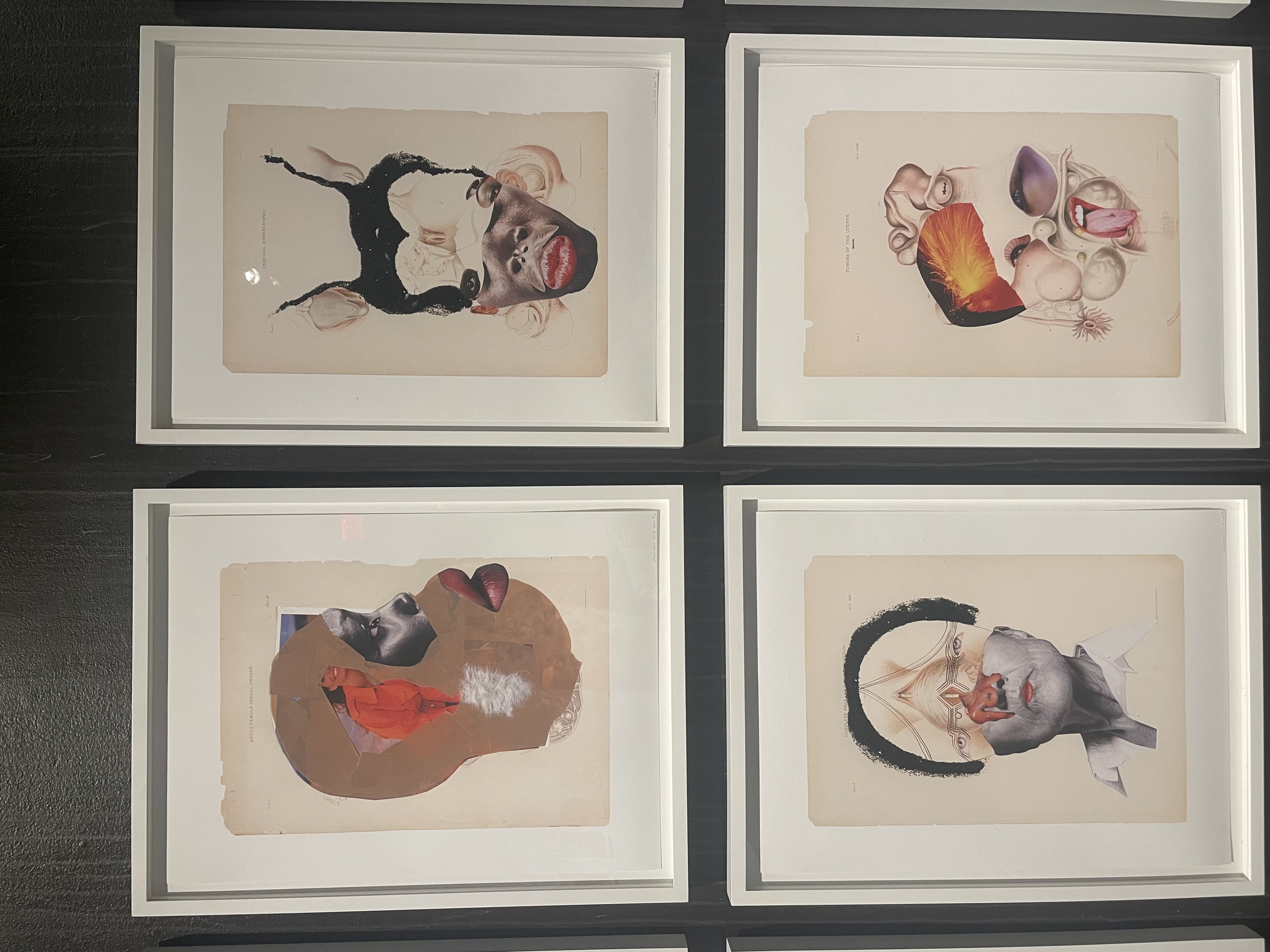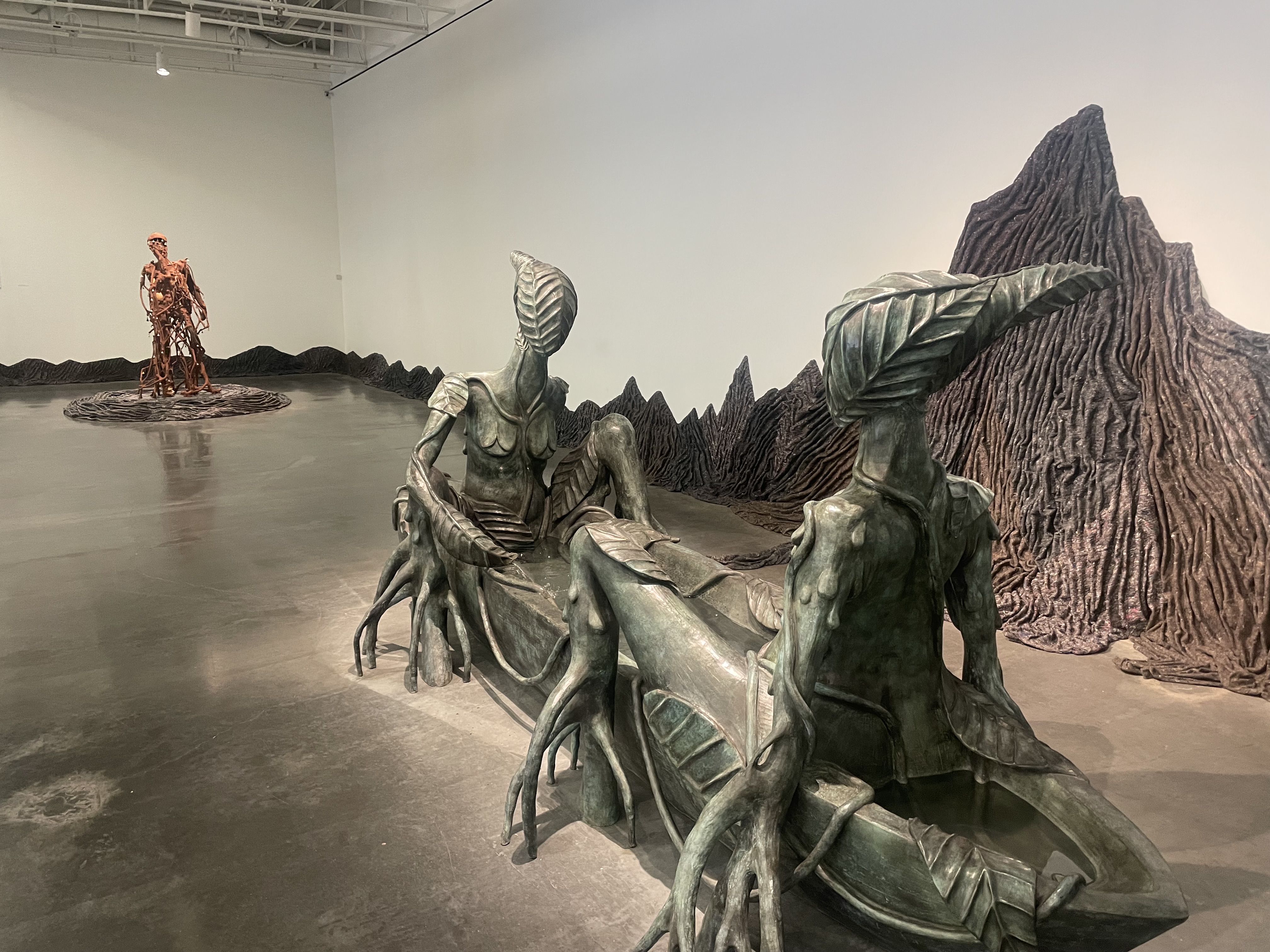Forced Optimism
Wangechi Mutu at the New Museum
March 2 – June 4, 2023
In her survey at the New Museum, Wangechi Mutu is a surrealist. The show — titled “Intertwined” after one of her early collage works — injects you immediately into Mutu’s unconscious: her early days as an art student in New York and her nascent, fantastical, and sometimes improvised watercolor, ink, and photo chimeras. The framework of the show is the “interconnectedness” of (an ambiguous) everything due to the legacies of colonialism, globalism, and the African diaspora. With over 100 works across various mediums, Mutu’s practice is presented as “models” for other worlds and futures. But the emotions and impulses that drive her work aren’t as nice or cohesive or optimistic as the exhibition’s futurist outlook would have us believe. They are filled with mirth, spite, and wayward sexuality positing that disjuncture, mess, and detritus are perhaps more productive modes for approaching her work than connection or entwinement.
There are moments in the show where the work and the space seem to be coming undone: wet-like drops of primer that turns the gallery walls into that of an unfinished cellar, flakes of glitter and pigment have settled at the bottom of a work’s glass case, red clay flung on the walls, so that material is always creeping into the gallery space. Her ability to traverse mediums is captured most successfully in her handling and experimentation with alternative materials — red clay from her home, Kenya, paper pulp, and skins and horns from animals — so that the work moves beyond mere representation into the uncertainty of feeling, touching, and smelling. For “Intertwined,” this approach to a variety of materialities is explained by her ability to signify a litany of things: colonialism, misogynoir, folkloric traditions, the African diaspora, etc. Against the backdrop of pain and trauma, Mutu’s sensory-filled experience is filed into a demand to comprehend her as a soothsayer, a world builder of possible “hybrid” futures rather than just as an impressively adept artist with a knack for telling stories. Particularly her early work, however, comes across not so much as world-building but as ethnographic nightmares, residing in the places where the methodological and ethical boundaries of cross-cultural contact collapse into a fear of the unknown, as if to say, “It’s okay to be disturbed and to not quite have the words or means to understand this.”

The cracks of the didacticism of the exhibition are laid bare in the gallery displaying Mutu’s most recent work, all executed since 2017. The exhibition reaches what feels like a painfully obvious zenith with a celestial realm, flooded with sunlight that presents a tight collection of several large-scale bronze sculptures and four new collage canvases. In comparison with the earthy tactility of the work on the floors below, these sculptures stand in as enlarged, static versions of the composite, melded creatures of Mutu’s earlier works. Her interest in animality and amalgam forms is still present in Crocodylus (2020) and in the watchful Water Woman (2017), a homage to Mami Wata, the mythical water spirit found across African diasporic cultures. These works mute the restless gnawing at reality of her earlier work, as if demand for Mutu’s visions necessitated a ramping up in scale and a fixing of the dripping, viral, unsettled sensuality into something decided and authoritative like bronze.

There is a perceptible and absurd leap in the kinds of projects contained in the exhibition’s namesake collage from 2003 to the bronze sculptures on the top floor (and lobby area), yet viewers are discouraged from understanding why that might be and are rather directed to considering how Mutu has tracked certain themes through her career and across mediums. This amounts to a curatorial and institutional fear of the mind, of the intersubjective experiences that allow for cracks in meaning, ultimately revealing an apparatus that moralizes rather than one that opens up cross-cultural contact in a de-globalizing world. If viewers left the exhibition feeling cracked-up — rather than satisfied or hopeful for some imagined utopic future — they might also be able to give themselves the permission to be imperfect and willing to encounter uncertainty.